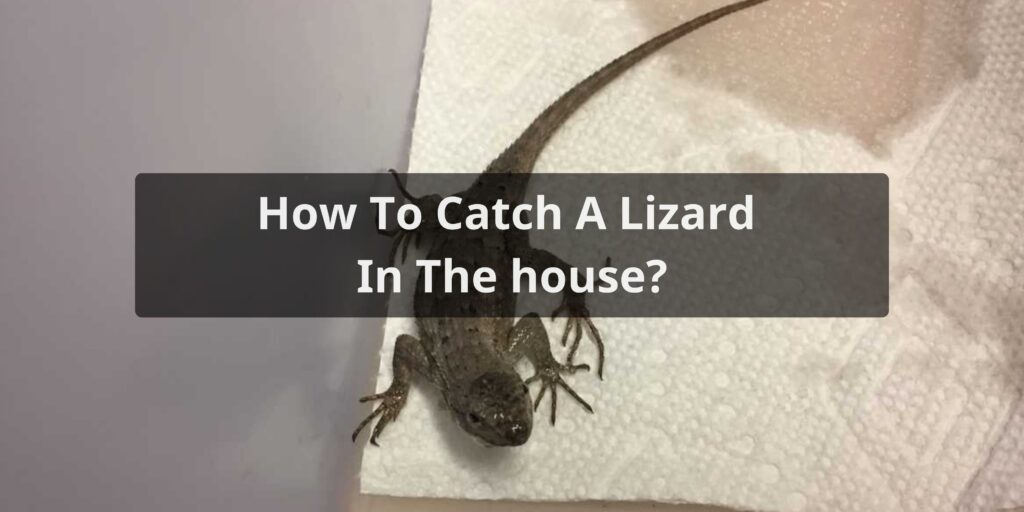Lizards finding their way into homes is a common occurrence, especially in warmer climates. While startling, lizards are harmless and can easily be caught and released outside. Here is a step-by-step guide on how to humanely catch a lizard that has made its way inside.
Locate the Lizard
The first step is to locate where the lizard is hiding. Lizards are fast moving and can quickly disappear from sight. Search under and behind furniture, appliances, boxes, plants, and anywhere else a lizard may crawl into. Also check inside closets, cabinets, and even under sinks. Listen and look for any movement or rustling that may indicate a lizard.
Once you’ve spotted the lizard, keep an eye on it from a distance so you can monitor where it runs to. Don’t make any sudden movements or noises to startle it. Remain calm and move slowly.
Gather Catching Supplies
Before attempting to catch the lizard, gather the appropriate supplies to safely and humanely trap it. Useful items include:
- Clear Plastic Jar or Container – A clear plastic container with straight sides will enable you to easily scoop up the lizard. Make sure it is large enough to accommodate the lizard.
- Stiff Cardboard or Magazine – This can be used to gently guide or scoop the lizard into the container. Avoid using your hands to grab the lizard.
- Blanket or Towel – A lightweight blanket or towel can be used to trap or cover the lizard once caught.
- Gloves – Wearing gloves will protect your hands if you need to handle the lizard at all.
- Flashlight – A flashlight can help you spot the lizard if it goes into any dark corners or crevices.
Catch the Lizard

Once you’ve located the lizard and have your supplies ready, it’s time to catch it. Here are some effective techniques:
- Scooping – Carefully place the plastic container over the lizard, trapping it inside. Then slide the stiff cardboard or magazine under the container to keep the lizard contained. Lift up the container with the lizard safely inside.
- Herding – Use the cardboard or magazine to gently guide or herd the lizard into the corner of a room. When it can’t move any further, lower the container over it and scoop it up as described above.
- Covering – Toss the blanket or towel quickly over the lizard to trap it underneath. Then pick up the blanket by the corners with the lizard bundled inside. Have your plastic container ready to transfer it into.
- Waiting – For quick-moving lizards that disappear into cracks or crevices, it may be necessary to simply wait for them to reemerge. Have your container ready to capture them as soon as they come out.
Remain calm and avoid making any abrupt movements that could cause the lizard to bolt away. Slow, steady movements are key. Do not attempt to grab the lizard with your bare hands.
Release the Lizard Safely Outside
Once the lizard is captured, take it outdoors right away. Keep the container closed and secure as you transport it. Release the lizard by carefully tipping the container on its side and allowing the lizard to crawl out. Ideally let the lizard go in a natural, sheltered area away from roads, sidewalks, and high foot traffic.
Never relocate the lizard to a new environment far from your home. Lizards have small home territories and removing them can negatively impact their ability to find food, water, and shelter. Let the lizard go close to where it was found.
Prevent Lizards From Entering Again
To help discourage lizards from entering your home again, there are some prevention measures you can take:
- Seal cracks and crevices around windows, doors, pipes, vents, and wiring holes where lizards may enter.
- Install door sweeps and weatherstripping to close up gaps beneath doors.
- Keep screens on windows and doors in good repair.
- Remove piles of debris, wood, or rocks around the exterior of your home to eliminate shelter and hiding spots.
- Keep landscaping trimmed back from the house.
- Use pest deterrents like cayenne pepper, garlic, or Ropel sprayed around possible entry points.
With some preparation and the right gentle catching technique, getting an unwelcome lizard out of your house doesn’t have to be stressful or difficult. Remain patient, move slowly, and always prioritize safely releasing the lizard unharmed.
Conclusion
Finding an unexpected lizard in your home can be startling, but they pose no harm. With the right supplies and technique, catching a lizard humanely to release outside is straightforward. Focus on making slow movements, guiding the lizard into a plastic container using cardboard, or trapping it under a towel. Always release the lizard right away in an appropriate outdoor area close by. Sealing up entry points and keeping the yard clear of debris can help deter lizards from getting inside in the future. With this simple guidance in mind, you can effectively and compassionately catch and remove lizards that find their way inside.
Read more topic about:
FAQs About How to Catch a Lizard in the House
What are effective methods to catch a lizard indoors?
Create an exit route: Open doors or windows, offering a way out. Use gentle tools like a dustpan or cardboard to guide the lizard toward the exit. Patience is key to avoid startling the lizard.
Can I use household items to catch a lizard?
Yes, items like dustpans, cups, or pieces of cardboard can be helpful. They allow you to guide the lizard towards an exit without harming it.
How do I approach a lizard without causing it to hide?
Move slowly and calmly. Avoid sudden movements or loud noises. Approach from the side to seem less threatening. Give the lizard time to get accustomed to your presence before attempting to catch it.
Are there specific areas in the house where lizards are commonly found?
Lizards often seek warm, hidden spaces: behind furniture, near windows, or on walls. Bathrooms and kitchens are also common areas due to moisture and insect presence.
What are some humane ways to catch and release a lizard?
Use a container: Place it over the lizard and gently slide cardboard under it. Lift both container and cardboard, then release the lizard outside. Alternatively, guide it towards an open door or window.
How can I prevent a captured lizard from escaping indoors?
Use a well-sealed container with small ventilation holes. Keep it covered until you’re ready to release the lizard outside. Avoid sudden movements that could prompt an escape.
Are there specific tools or traps for catching lizards indoors?
Yes, you can use a handheld critter catcher or a gentle reptile-friendly net. These tools allow you to catch the lizard without direct contact, making the process safer for both you and the lizard.
What precautions should I take to avoid harming the lizard during capture?
Handle gently and minimize stress: Avoid squeezing or gripping too tightly. Keep the lizard close to the ground to prevent injuries from falling. Handle with clean hands to avoid transmitting bacteria.
How do I safely release a captured lizard back outside?
Choose a suitable release area: Preferably near where the lizard was found. Open the container gradually to allow the lizard to exit at its own pace. Avoid sudden movements that might startle it.



